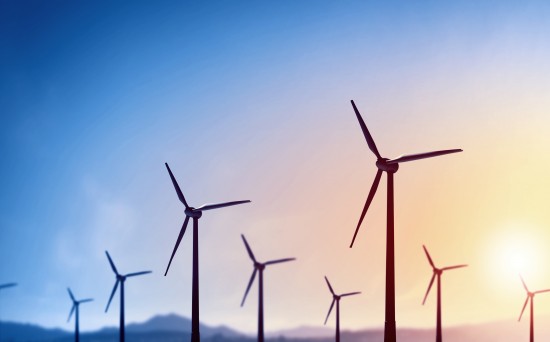Are we ready for wind farms?

The first modern models of wind turbines driving electricity generators appeared on the market around 1973, when the introduction of the Arab oil embargo dictated the need for the Western governments to find alternative fossil fuels.Initially, these models were extremely expensive, and due to the fact that they were low and were rotating too fast, their operation was inefficient. Therefore, after 1992, when the American Congress passed a tax relief dedicated to wind energy, entrepreneurs invested in the higher and more durable constructions whose blades were made of fiberglass.
Currently, the main driving force for the development of wind farms in the world is the goal of reducing the impact of human activities on the environment and climate, while meeting its basic needs.In the era of combating climate change, the occurrence of which is mainly associated with coal, many countries have declared their willingness to take action to produce only "green energy" by 2050.It is estimated that wind energy is the most economical option in the process of achieving this goal. Theoretically, wind turbines have nothing to do with coal unless you look at their production process. For one 6-8 MW off-shore windmill to be built, about 400 tons of steel is needed, which is made from about 140 tons of coke, which in turn is obtained from about 200 tons of coking coal.The average lifetime of a wind turbine is about 20-30 years, and after this time the problem arises in the form of recycling. While 85% of turbine components can be utilized, it is troublesome to use used rotor blades made of fiberglass.The size of a single blade can be compared with the size of a Boeing 747 wing or football pitch. They are designed to withstand strong winds, and the extraordinary durability of the material prevents its crushing, thus recycling or change of use.Transportation of used blades is extremely expensive, because only one piece can be transported even on large platforms at a time. It happens that in order to transport an element of this size at all, it is necessary to cut it into smaller parts, for which an industrial saw inlaid with diamonds is needed.Then, as is often the case in the United States, blades become waste disposed of in landfills or are buried in the ground, where they will remain forever, which is nothing but leaving this trouble to future generations.In EU countries, attempts have been made to burn blades in cement kilns or power plants, however, the amount of energy obtained in this way is small and unstable over time, and the burning glass fiber emits contaminants.
Admittedly, many companies are currently developing a recycling and utilization solution for used wind turbines, such as Veolia, which is experimenting on grinding them to dust, or the start-up Global Fiberglass Solutions, which has developed a method of crumble blades and pressing them into granules and slabs of fiber.However, the implementation of these projects is in its initial phase, and it should be borne in mind that with each year this type of waste will arrive at an ever faster rate.
Germany is also struggling with the waste management of wind energy infrastructure. The Federal Environmental Protection Agency (UBA) indicates that Germany is not prepared to dispose of used wind turbines.The agency also draws attention to the threat to society and the environment that may result in improper recycling of the plastics used to make the rotor blades.
Therefore, in the opinion of many critics, wind turbines reaching landfills cannot be described as elements of environmentally sustainable energy. Moreover, the actual state of affairs is that in order to build only one wind turbine, at least 12,000 square meters of land must be taken out of service.Renewable energy sources should serve to protect the climate and reduce the share of human impact on the environment and climate change. Meanwhile, it turns out that a kind of wind energy boom as a remedy for the progressive degradation of the planet takes place without a properly prepared action plan in the area of material management throughout the entire life cycle.
